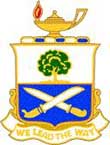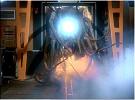spence
Posts: 5400
Joined: 4/20/2003
From: Vancouver, Washington
Status: offline

|
I didn't realize that the effect of the CV coordination rule was to BOTH fragment the Allied strikes AND reduce the number of planes even launched. ONLY THE FIRST EFFECT HAS ANY HISTORICAL JUSTIFICATION. THE LATTER IS PURE BOGUS.
I've been reading "Shattered Sword", the new book on the battle of Midway and had reached the conclusion that the CV coordination rule is more or less appropriate in its effects (although I think it ought to be an experience thing for the individual carrier which has nothing to do with the date but rather more with what that carrier has done in the past).
Somehow however it ought to effect Japanese CAP. They had no effective controller for the CAP over KB - each carrier managed its own. "Managed" is something of an overstatement since the officer who "managed" the CAP also oversaw all flight deck operations; depended on lookouts, smoke screens and shell splashes as his sensors and communicated with "his" CAP on the same radio frequency as anybody communicated with any airborne IJN aircraft (CAP, strike and search). Essentially the CAP consisted of a variable number of totally independent 2 or 3 plane shotais each under its own shotai leader. The system worked but just barely so long as the enemy attacked in relatively small numbers from a single direction. The first time it was put to a real test of its effectivenes was approx 1020, 4 June, 1942. BTW, it flunked the test.
The idea of a Fighter Direction Center in a CIC equipped with radar, dedicated communications, and specially trained personnel apparently didn't begin to formulate in the IJNs doctrine until somewhere around late 1944. By then, such thoughts were mostly just something to keep a few extra and shipless officers busy until the surrender.
Incidentally, the idea of a ring defense, such as was always practiced by USN CVTFs was not adopted by the IJN until 1944. At Midway most of KBs DDs were on picket duty 15 km from the carriers. Each carrier had the direct fire support of only 1 DD: its plane guard. Chikuma, Tone, Nagara were relatively nearby but out of effective 25 mm range (approx 8 km). Kirishima and Haruna were at the same distance as the cruisers. Any Japanese ship under attack was supposed to manuever violently to avoid the attack and the spacing between ships was so that would be possible. But such manuevers rendered the fire control solutions for the manuevering ship's heavy AA totally worthless. And to make matters worse, the ammo feed for the 25 mm AA was from 15 round drums, which obviously needed to be changed a lot during an attack. Thus gunners generally only fired one barrel at a time (essentially halving the effective number of guns). In point of fact a Japanese CV TF consisted of something similar to what the Allies have to do in the game only even smaller: just individual CVs and their plane guard DD dealing with whatever gets thru the CAP by themselves.
The game models the evolution of USN carrier doctrine. It essentially doesn't model the IJN doctrine at all with the one exception that it allows multiple carrier TFs to launch well coordinated offensive strikes - something only the Japanese PRACTICED before Pearl Harbor. But defense of the fleet was not well integrated into Japanese doctrine. The continual independent recycling of the CAP by all 4 carriers prevented the spotting of any kind of strike once the Americans were located at Midway. In the account in Shattered Sword, which is incredibly detailed mainly from the Japanese side, I have seemingly "watched" the Japanese defense become more and more unglued as each American squadron goes into the meatgrinder all morning, finally but by now almost inevitably culminating in the attack by the 3 SBD squadrons that destroyed the heart of the KB. Absolutely great book.
|
 Printable Version
Printable Version

















 New Messages
New Messages No New Messages
No New Messages Hot Topic w/ New Messages
Hot Topic w/ New Messages Hot Topic w/o New Messages
Hot Topic w/o New Messages Locked w/ New Messages
Locked w/ New Messages Locked w/o New Messages
Locked w/o New Messages Post New Thread
Post New Thread